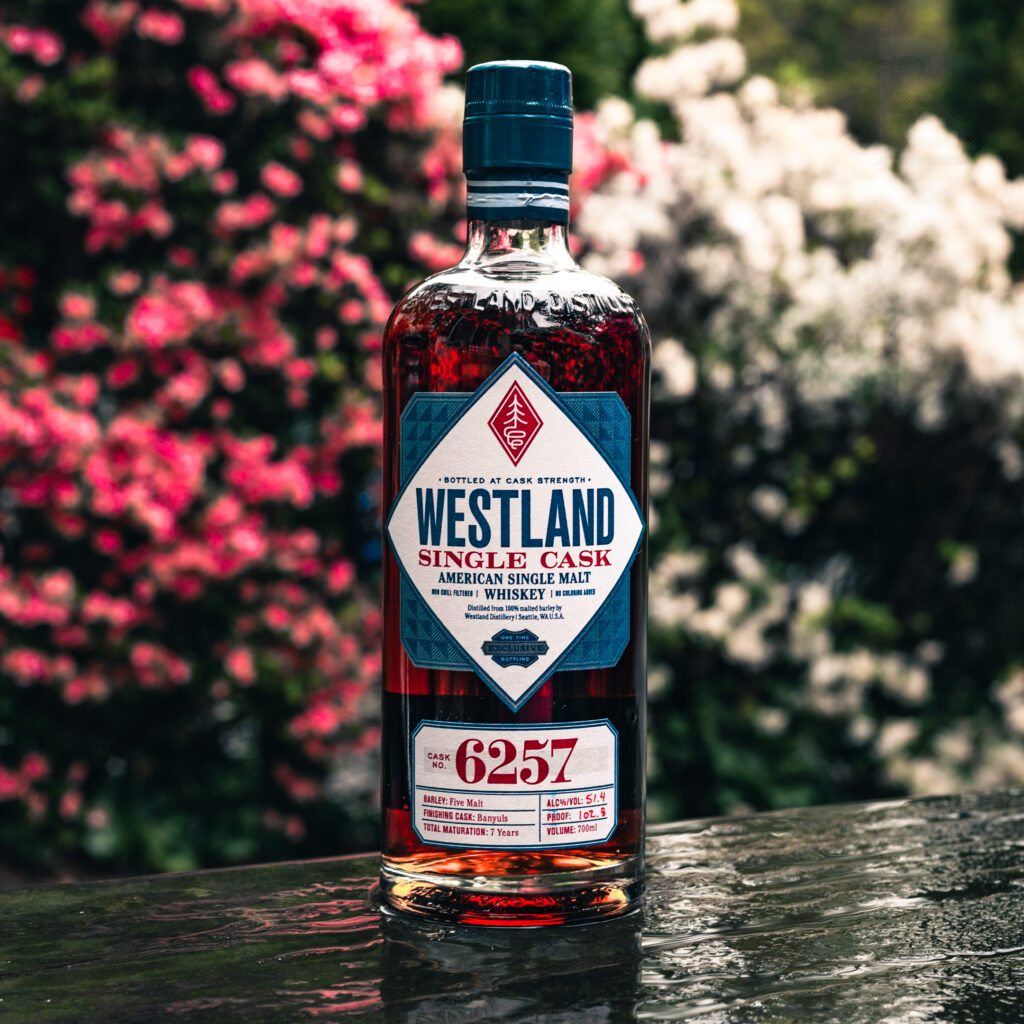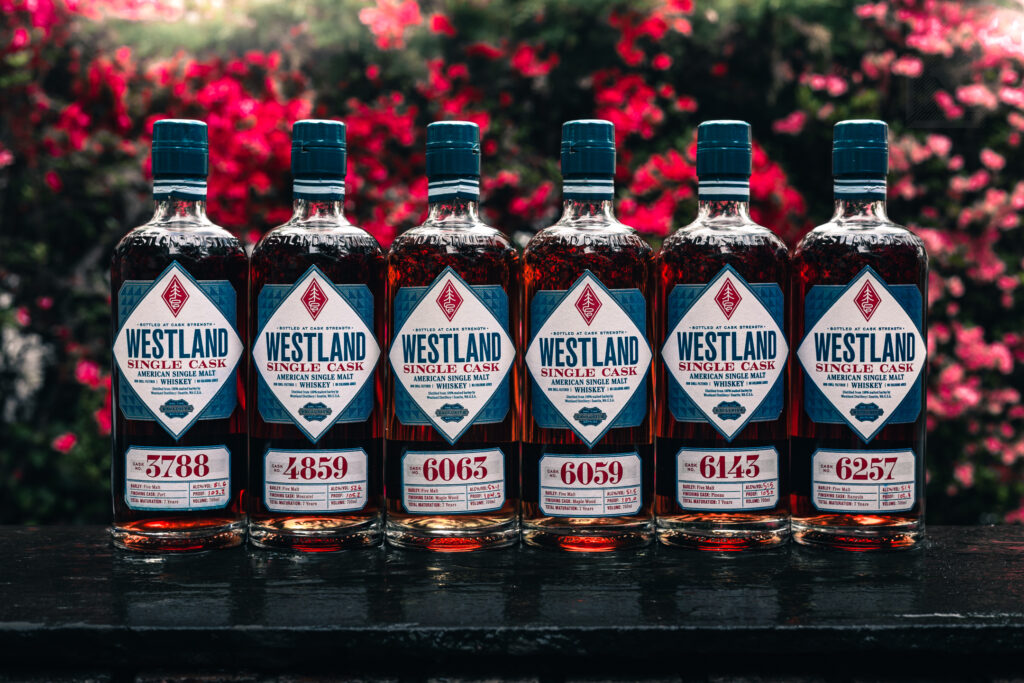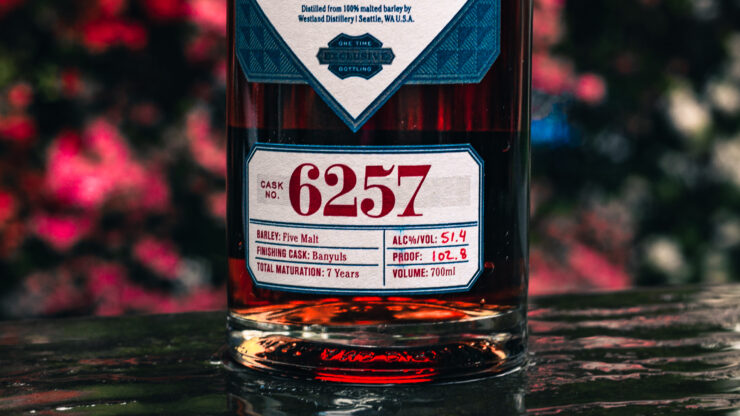American Single Malt Banyuls Cask Selection
After hearing this barrel selection was the favorite of the bunch, I had to find out exactly what Banyuls was. It’s a sweet, fortified Vin Doux Naturel (VDN) wine made primarily of Grenache grapes in the Roussillon region of France, bordering the Spanish border. Produced in a similar manner to Port, there are various styles of Banyuls that range from an apéritif to a dessert wine and are typically very sweet.
Aged for a minimum of 10 months in oak or outdoors in glass vessels. In a process called maderisation, the wine is exposed to the temperatures and effects of the sun directly allowing the wine to heat and oxidize. A unique process that I was unaware of and sent me down a rabbit hole to learn more.
Using their 5 malt barley blend, this Westland selection was initially aged in new charred oak for a little over 4 years. Transferred to a Banyuls cask for a lengthy secondary maturation of about 4 years, the total age is likely around 8 years old. Bottled at 102.8 proof, it is right in their average abv range considering their climate.
Tasting Notes
Tasted neat in a Glencairn with 30+ minutes of rest. Dilution was added throughout the tasting with additional rest for over an hour for comparison.
The nose is a mix of musty old books and mushrooms. Like dusty, old, oak cabin furniture from the 70s. Fermenty and sour, like an apricot pomace, and a funky sun-dried sultana aroma. I’m hesitant to call this lactic, but there’s a bready poolish note to the nose that reminds me of fresh butterfat solids. Very earthy with a topsoil quality. Acidic olive brine and well-aged sweet balsamic vinegar. Hand-me-down cardboard-backed children’s books. All of this is held together with a dominant oak presence. Adding water unfortunately turned the nose. Unpleasant earth and dirt notes opened up further like a wet composting mulch bag.
Such an odd nose transitioning right into a salted caramel and vanilla first sip. You’ll notice lots of wonderful baking spices on the palate. Coriander, a hint of mint, and a light dusting of cinnamon. Cherries, raisins, and prunes bring a delightful fruity flavor. The oak on the palate is beautiful and brings a balancing bitterness. I’m unsure if it’s sulphur, but there is a dry astringency that is difficult to place. Water enhances the savory notes and mineral qualities. Grape leaves and dolmades – herbal, briny, and tart. Clay and a bit of graphite. Water helped lighten the oak flavors and produce a fruitier flavor quality.
On to the finish where all of the dry tannins lay in wait. Very dry with a heavy mineral flavor. Calcium, chalk, sulphur, and again a clay flavor. The fruits are less stewed jam and now have a medicinal “berry” flavor. Fruits about to go off, like a mushy, near-flavorless raspberry and bitter grapefruit peel. Water certainly helped out the finish for me allowing a fruity wood note to emerge again. Cherrywood, ash, and some charcoal are present. The barrel char notes lend to the minerality of the spirit.
Overall
This was a challenging bottle to review. I expected more barley flavors to be present in the malt. I wish I could have tried some Banyuls by itself to understand just how much of the cask was driving the flavor profile. Something about this bottle is intriguing and offputting for the exact same reasons.
I found the barnyard qualities dissipated with an extended rest time and I highly recommend you do the same before passing judgment. This may be a bottle that is either hit or miss with some. As divisive as cilantro for example.
I enjoyed some of the flavors that I got from this bottle but it wasn’t the fruity dessert wine I expected. It has more uniqueness than your typical wine finish and is something that grows on you, albeit slowly. Especially so with the dry tannic finish.
Not a huge fan and it’s certainly odd, but fun at times. I know a few others that rather enjoy this bottle but I recommend you give it a try before you buy.



